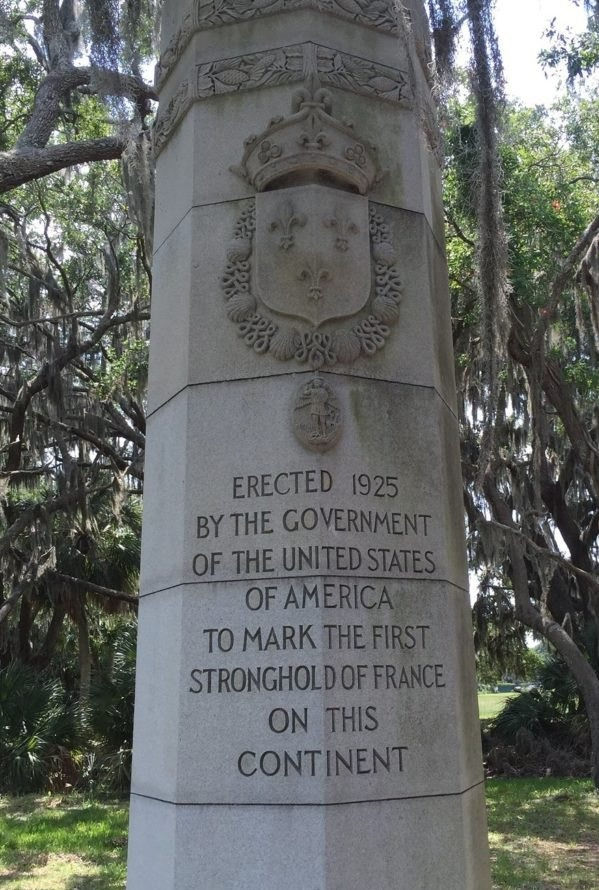The Forgotten Capital
- sdiamondriley
- Nov 8, 2022
- 3 min read
Updated: Jul 30
Half a century before the pilgrims set foot on Plymouth Rock, a bustling European capital called the Lowcountry home. Forts, homes, businesses, schools, and churches filled this center of government for the entire North American continent. Then it disappeared from history until some intrepid archeologists finally dug up the truth 400 years later.

Prior to Plymouth
Most every American 5th grader knows about the 1620 pilgrim landing in Massachusetts, and many have heard of the less successful Jamestown (1607) and Roanoke (1583) colonies in Virginia. Those attempts at English colonization are standard American History 101. But what of the Spanish explorers who landed in the New World many decades earlier? When Ponce de Leon arrived on the east coast of what is now the state of Florida in 1513, he declared the entire continent of North America for the country of Spain. Native Americans aside, Spain considered itself the "owner" of the immense land de Leon called La Florida (for its abundance of blooming flowers) for the next century or more. But other European countries disagreed.

Feeling threatened by English and French interest in settling the "new" continent, Spain's king decided a more official presence would seal his claim. In 1565 he dispatched an armada led by admiral Pedro Menendez de Aviles (see image at left) with the task of building a capital city for the Spanish continent of La Florida. The ships' first landfall was in current-day St. Augustine, FL, where Menendez ordered the construction of a fort and declared the site San Augustin. But here's the part you never learned in school: after leaving a small contingent to protect the new fort, Menendez and the rest of his flotilla headed north to the deep waters of Port Royal Sound and built their capital city right here in the Lowcountry.
Carolina Capital

Today when you cross the palm-lined causeway to Parris Island, SC you are entering U.S. Marine territory. In 1566, however, this protected sea island proved the ideal choice for Spain's new "permanent" colonial capital of Santa Elena. As royally-appointed governor of the continent, Menendez oversaw the building of the lively settlement of as many as 60 houses for nearly 500 soldiers and citizens--men, women, and children. Colonists included stonecutters, carpenters, farriers, blacksmiths, clerics, surgeons, and a master brewer. Governor Menendez proved a fair and respected leader until his death in 1574, when his less-capable son-in-law replaced him. By 1587, raids by nearby Native American tribes, coupled with increasing threats from England's Francis Drake, led Spain's King Philip II to urge Santa Elena's residents to retreat south to the protection of San Augustin. Taking advantage of the Spanish exit, England established several American settlements in the coming years--with increasing success. The rest, as they say, is history. After two decades as a capitol city, Santa Elena had been abandoned and was seemingly forgotten for the next four centuries.
Off the Record
According to the U.S. National Park Service, Santa Elena is the earliest known and surviving example of planned urban occupation by Europe in the United States. But for hundreds of years it was not known in our country at all. In the mid-1800's, excavators determined that they'd discovered the site of a fort on Parris Island, but mistakenly assumed it to be the

French Charlesfort, which had stood nearby for several months in the mid-1560s--until the Santa Elena soldiers burned it to the ground. Scholars were so certain about their discovery that in 1925 the U.S. government erected a monument to the French fort on the site (see photo at left). Later excavations (beginning in 1979) by archaeologists at the University of South Carolina correctly identified the ruins as Spanish based on pottery sherds and other artifacts (see photo at top). This baffled them, though, as no American historical records mention that the Spanish settled anywhere on our continent other than St. Augustine. Only when researchers reached out to historians overseas was the puzzle solved. Spanish historical records told of the Santa Elena colony in detail, while English records eliminated the capitol completely--a clear example of history being told by the winners.
If you wish to visit the site of the original Santa Elena colony today, be sure to have photo identification for each member of your party as you will be entering the gated and guarded grounds of the U.S. Marine Corps Recruit Depot, where about 16,000 new Marines pass through boot camp each year. The colony site is located near the present-day golf course clubhouse, but be sure to also check out the base museum, which features historical exhibits from Santa Elena days through the present.
For more (real and fictional) details concerning this chapter in Lowcountry history, check out my historical mystery novel The Sea Turtle's Curse at www.SusanDiamondRiley.com/books .





Comments